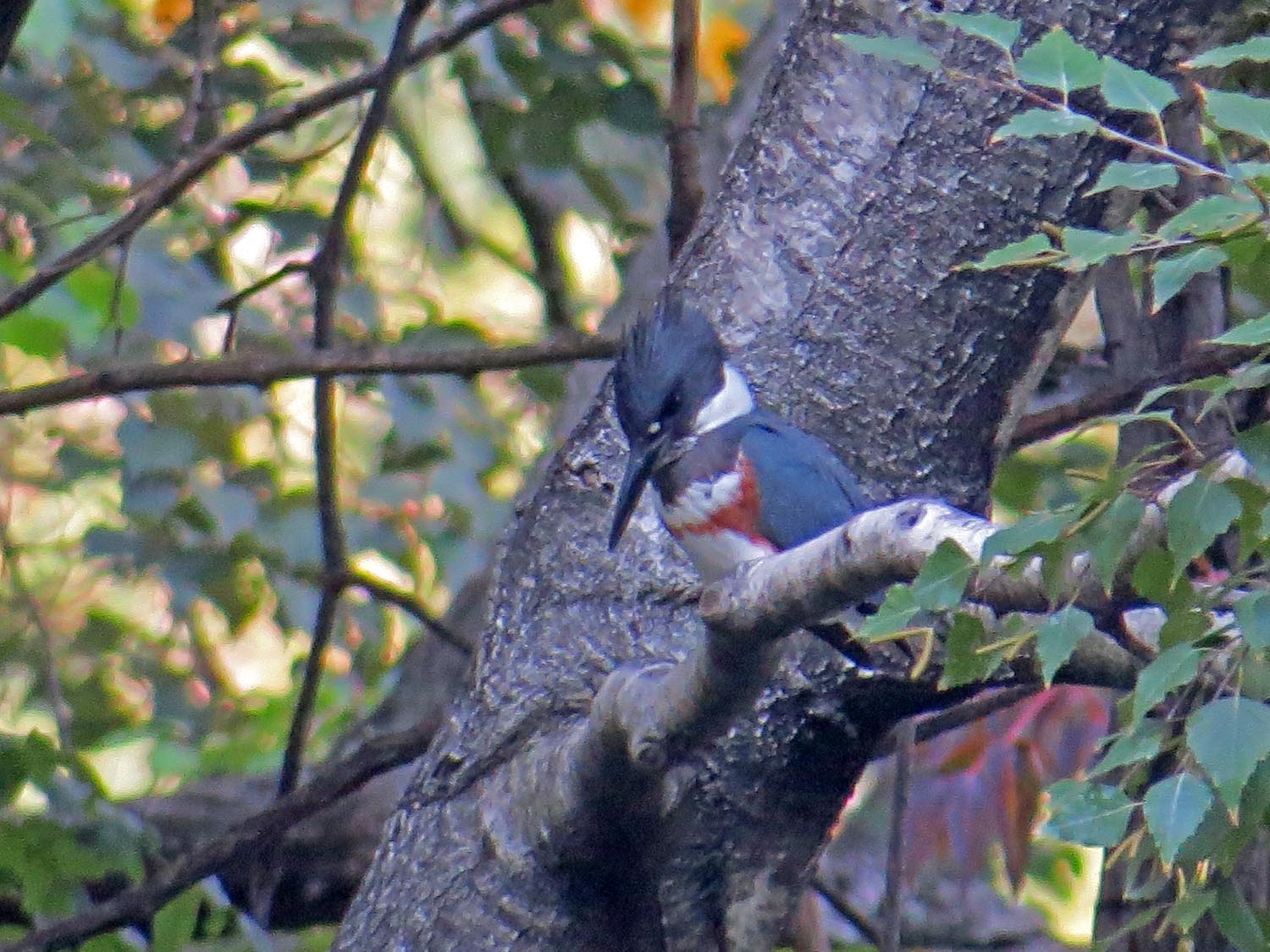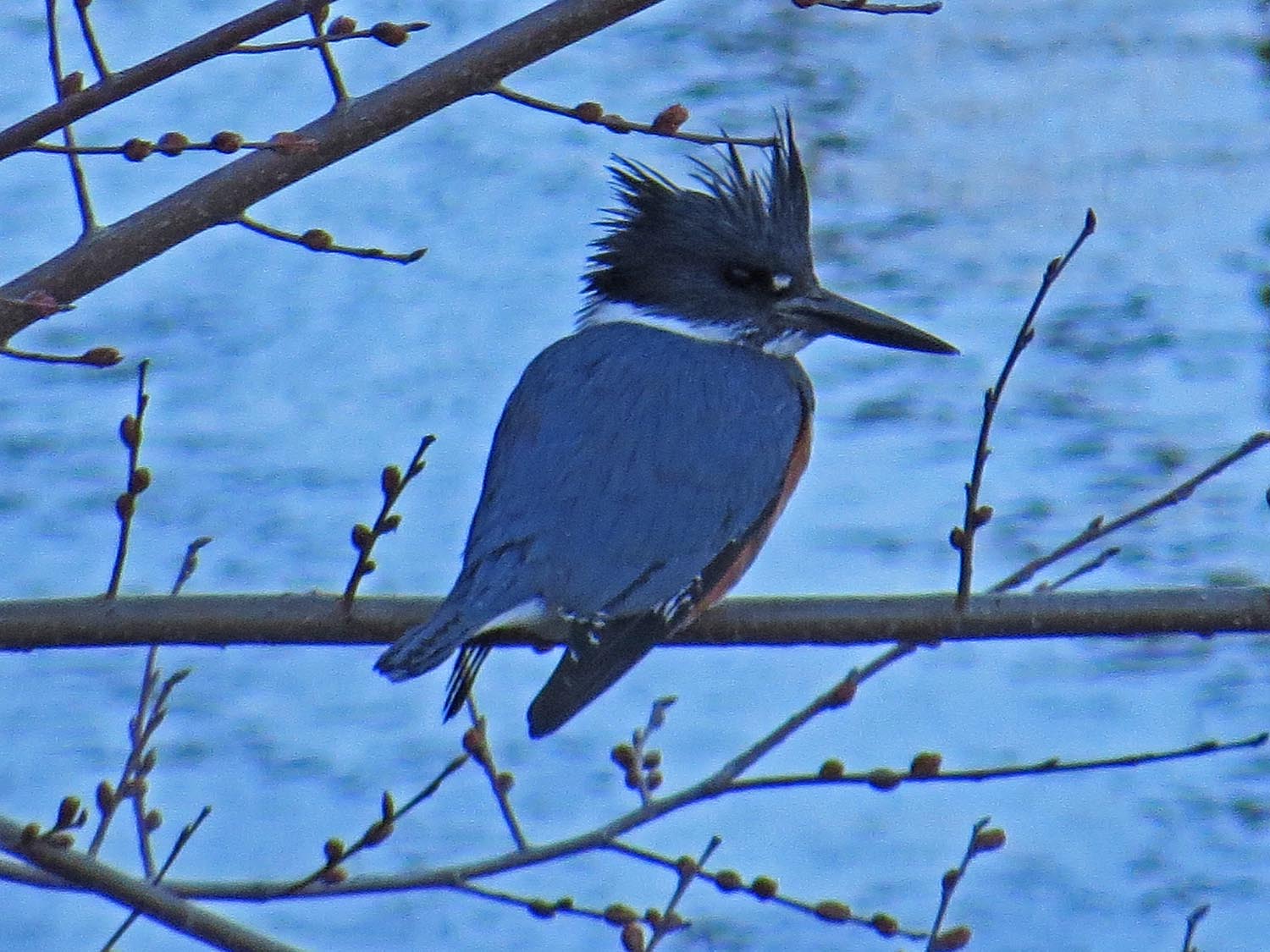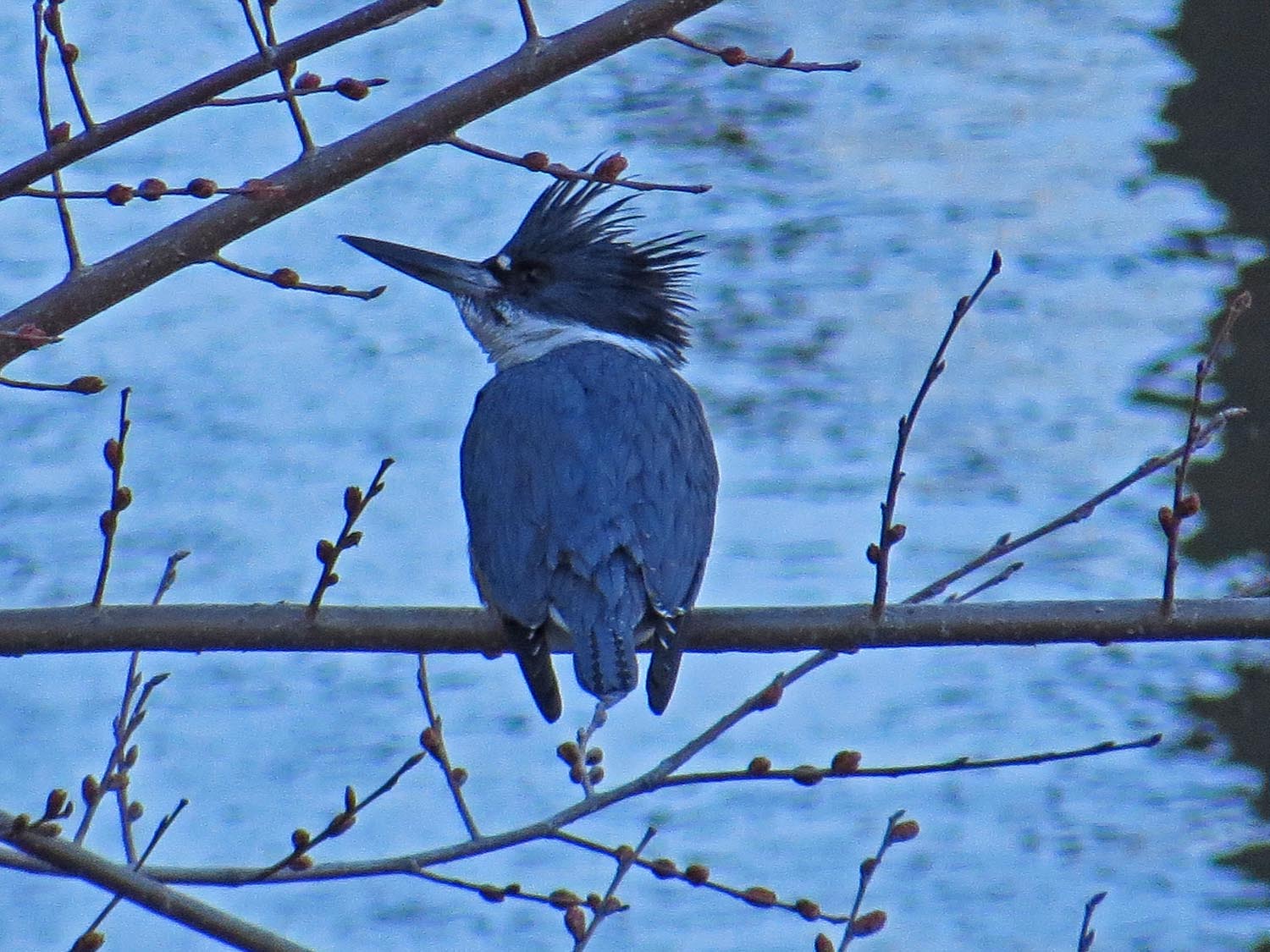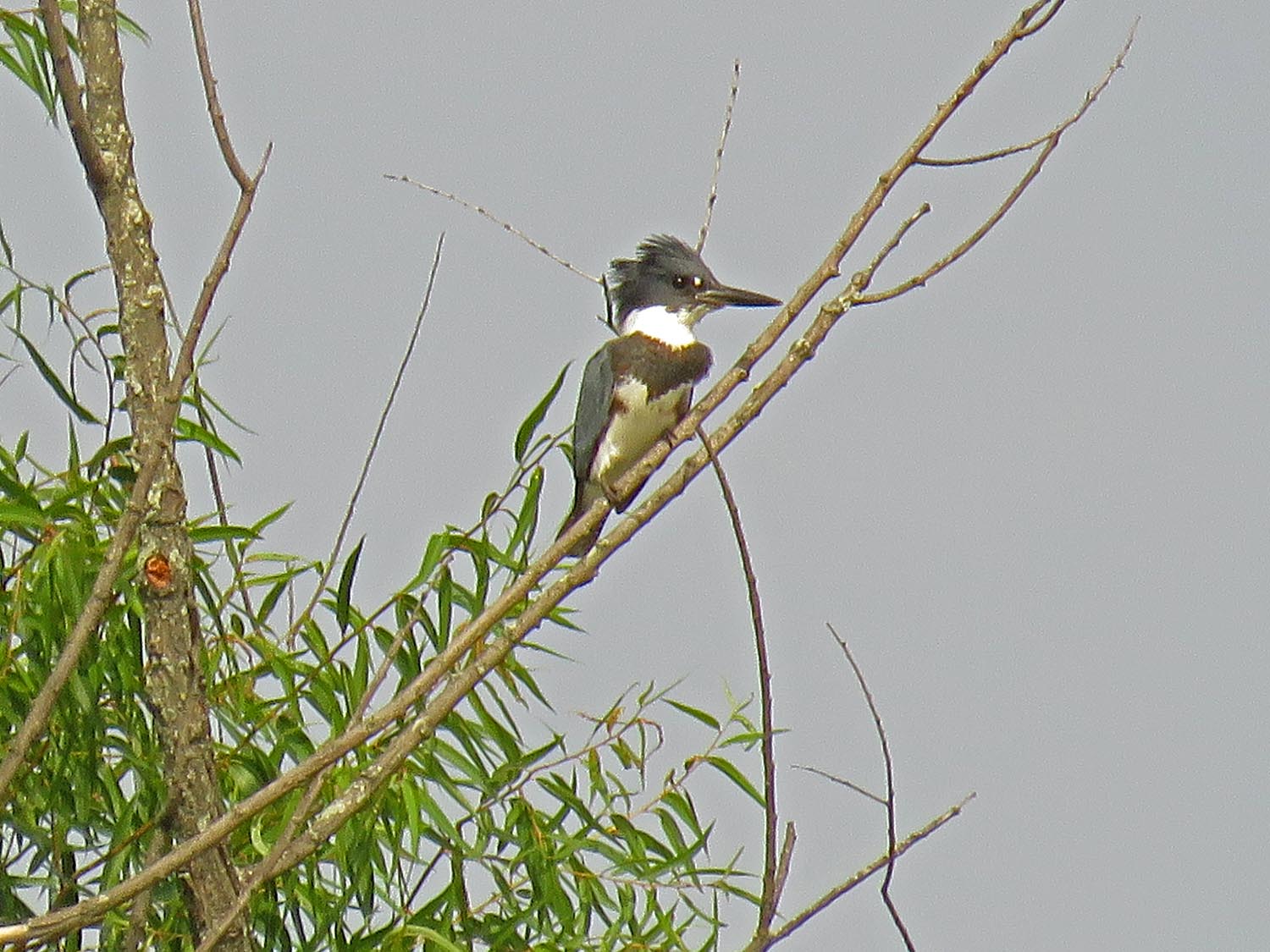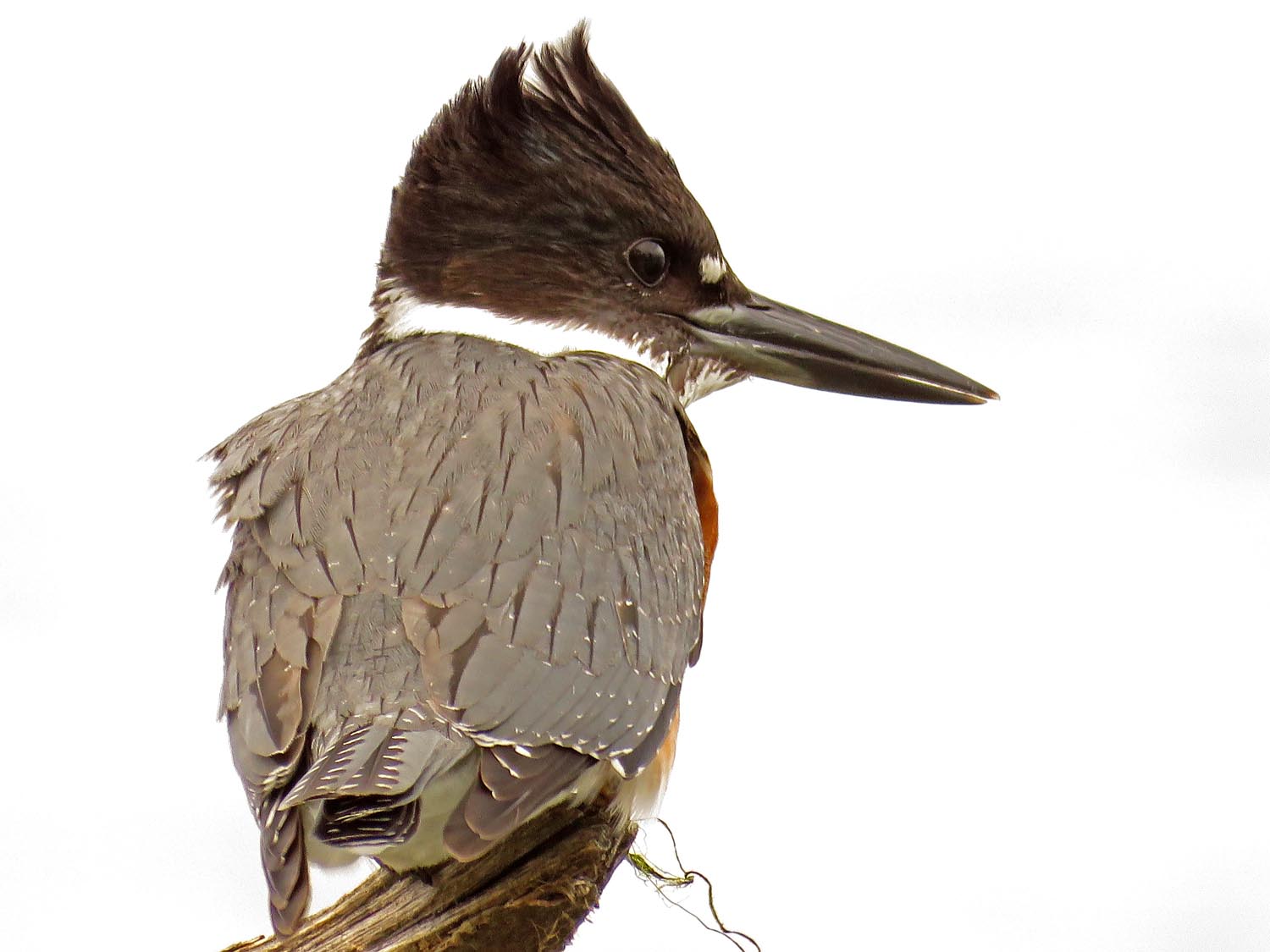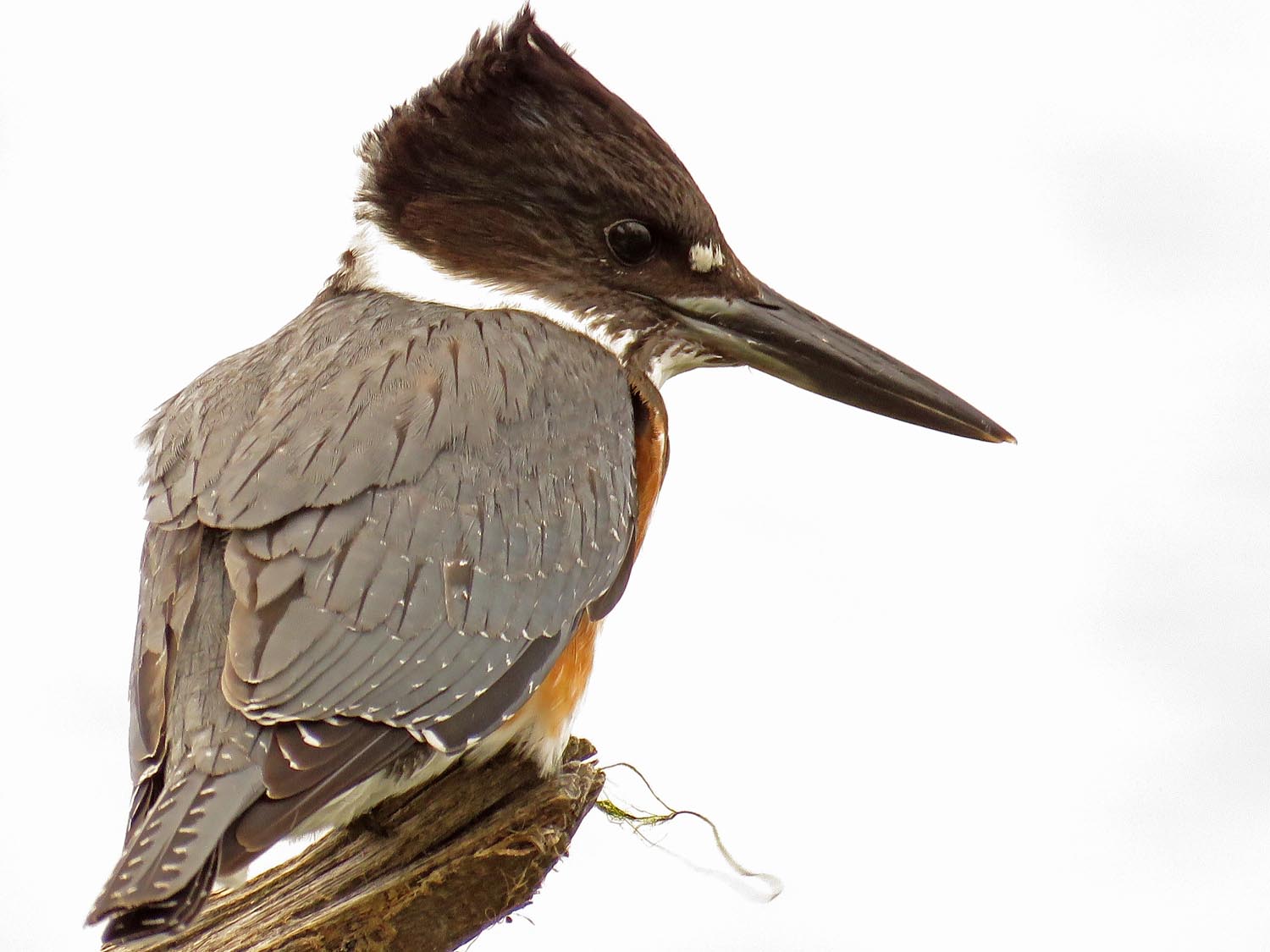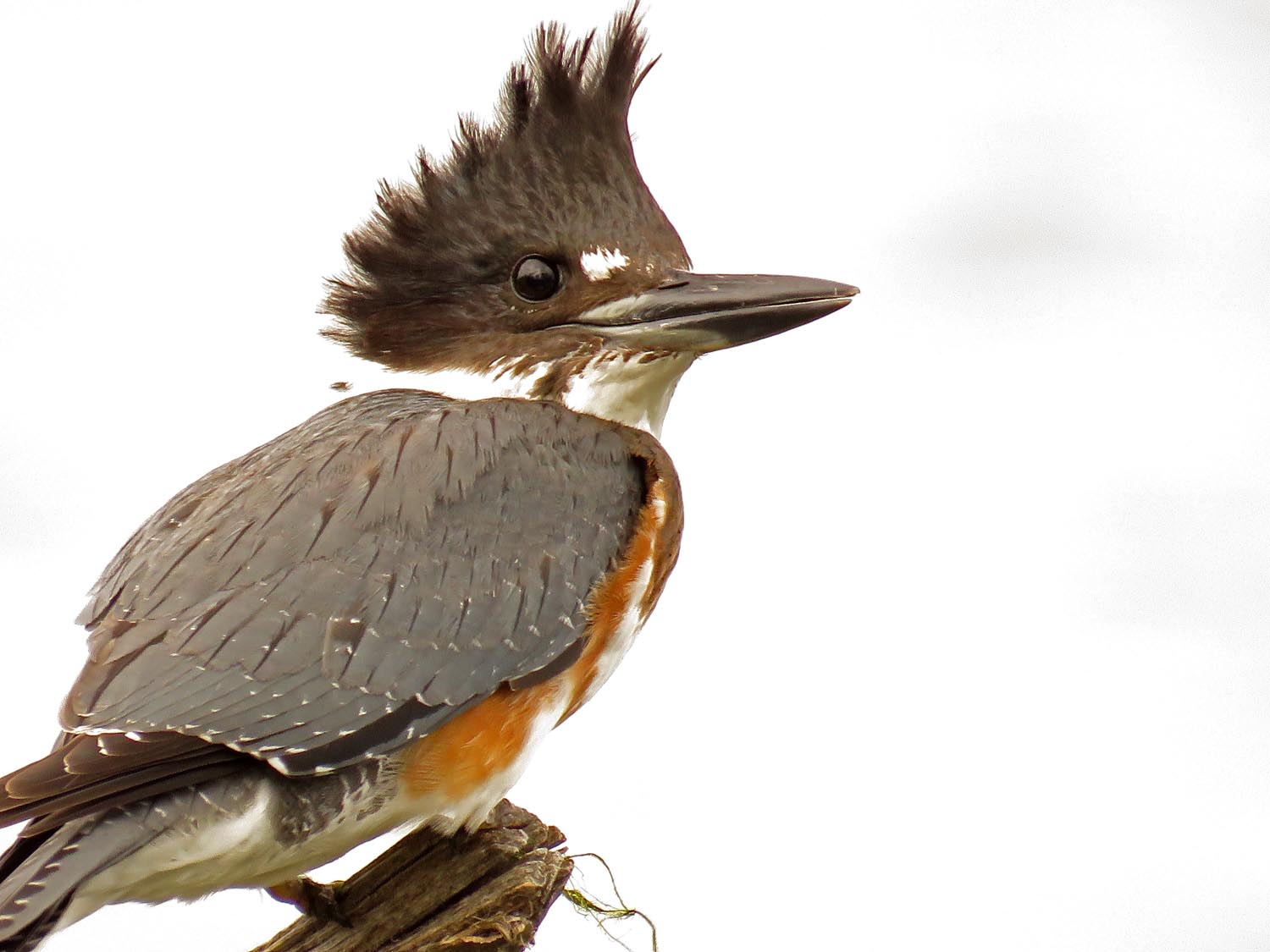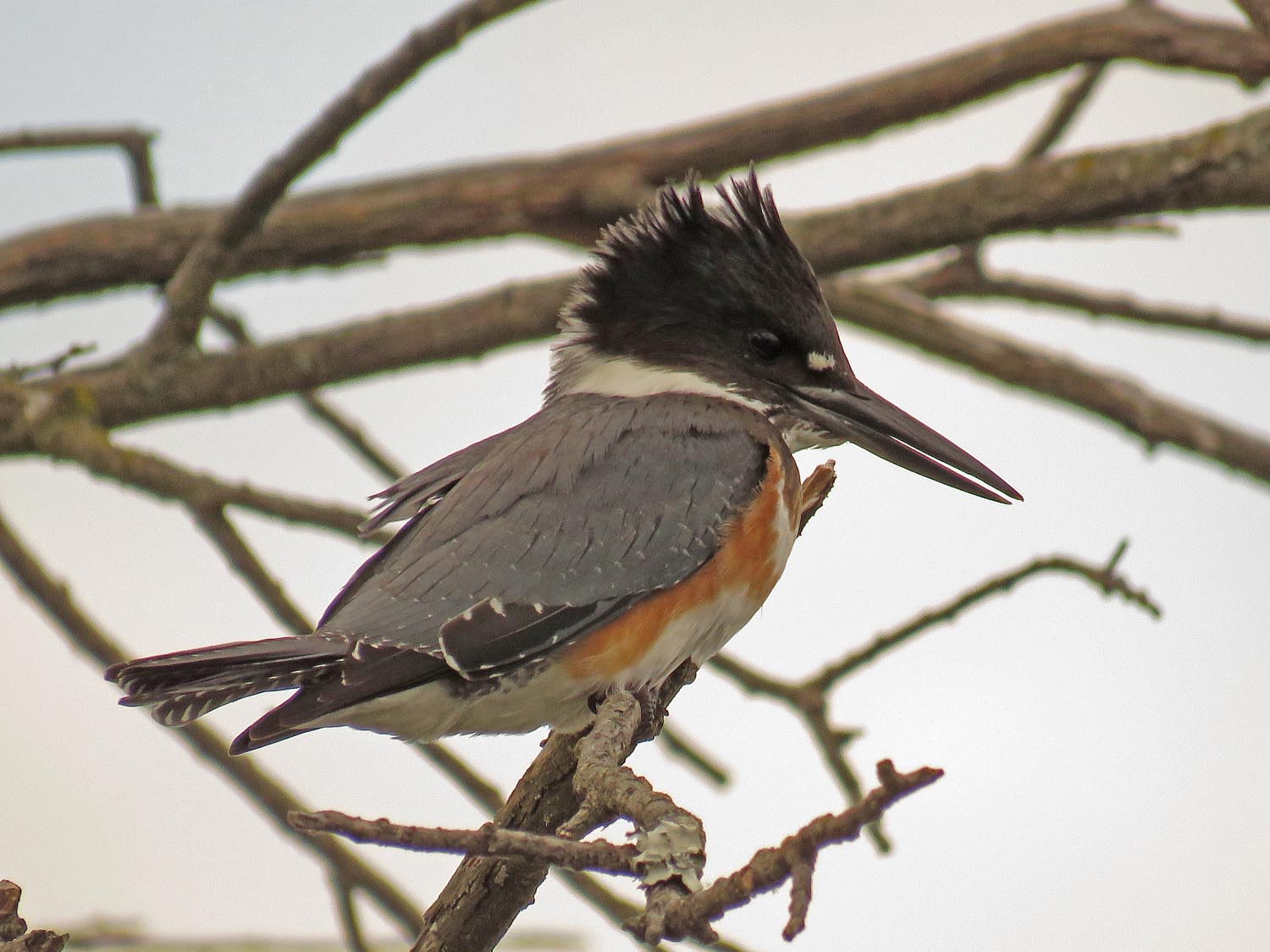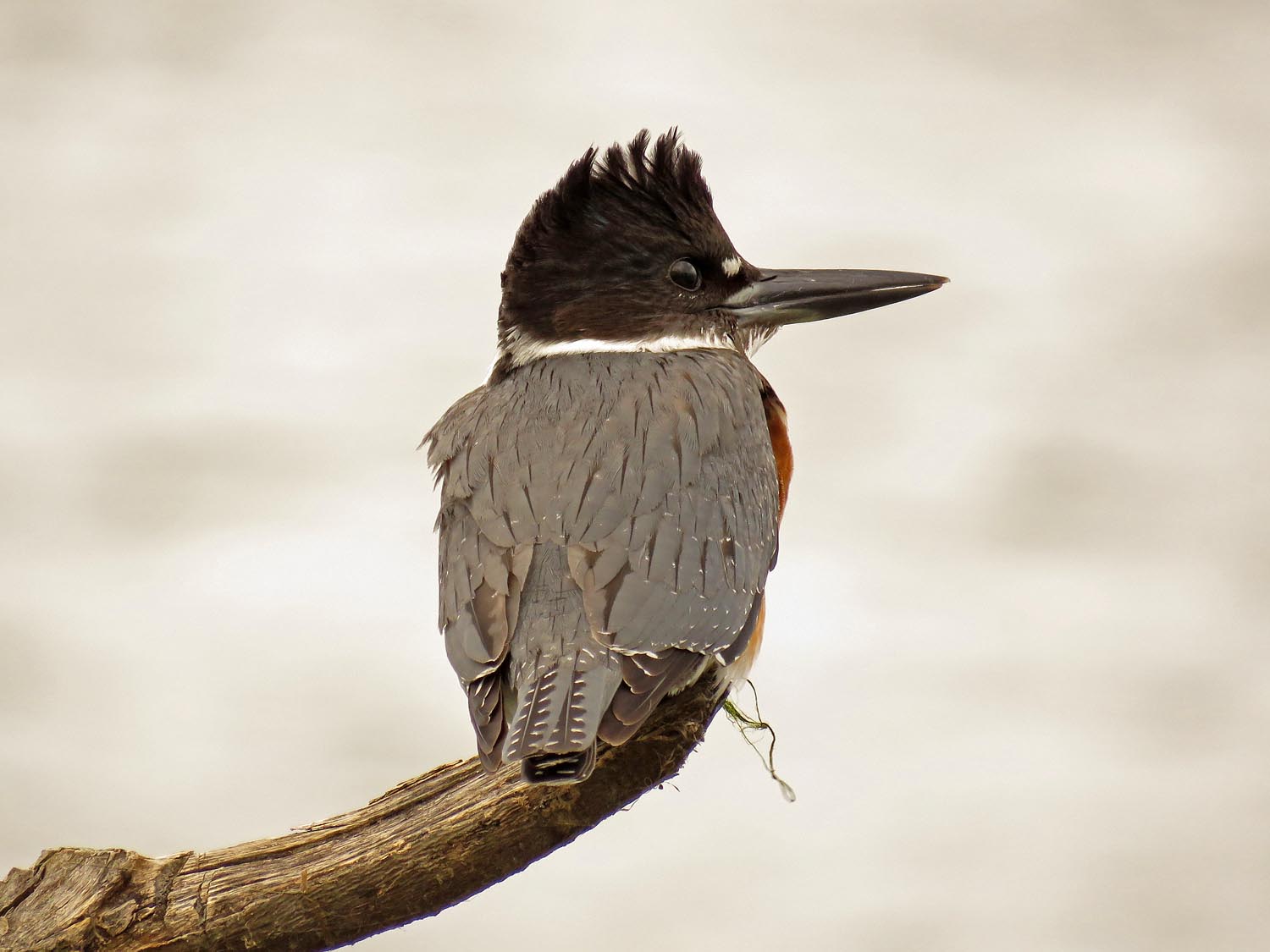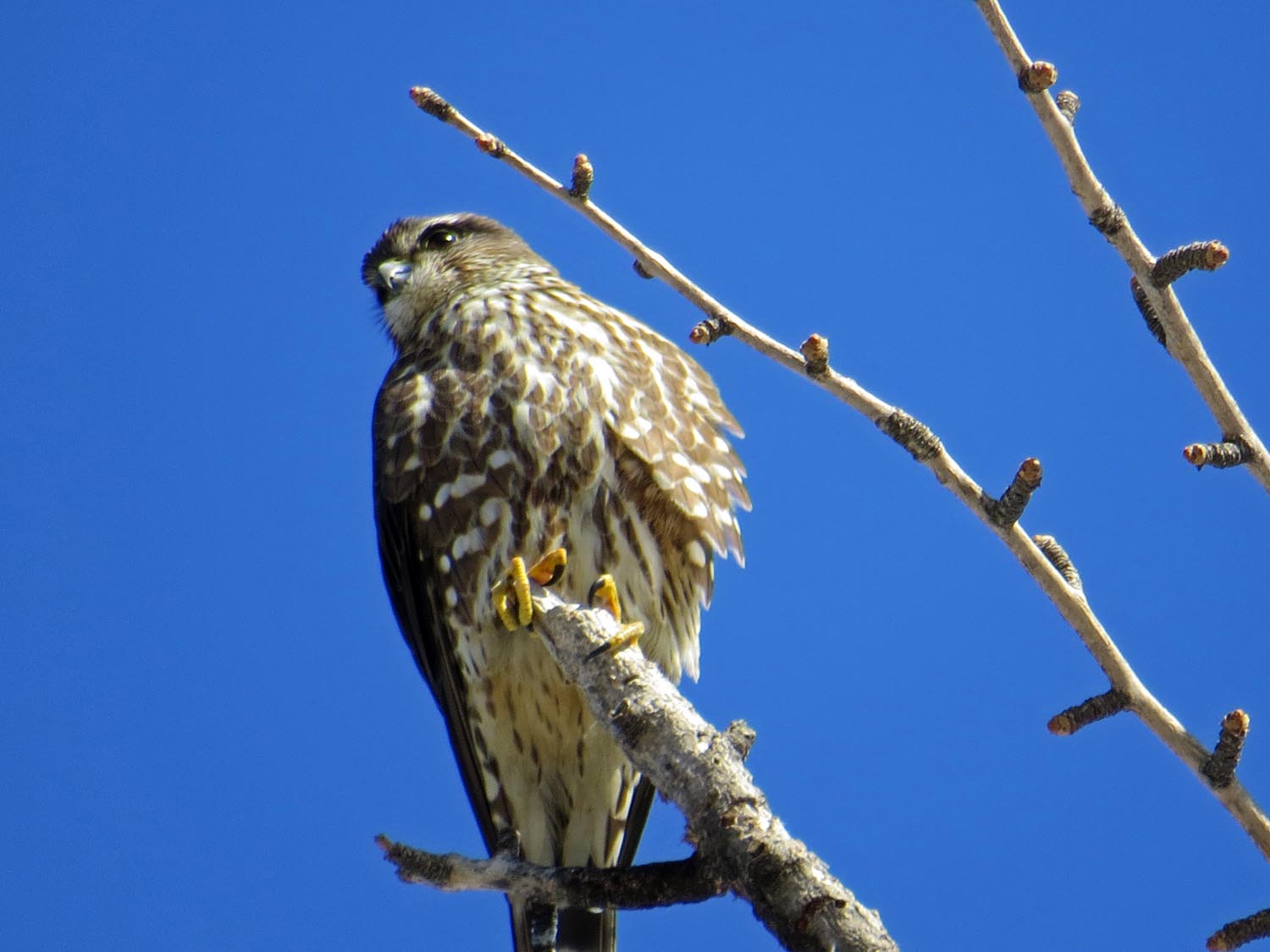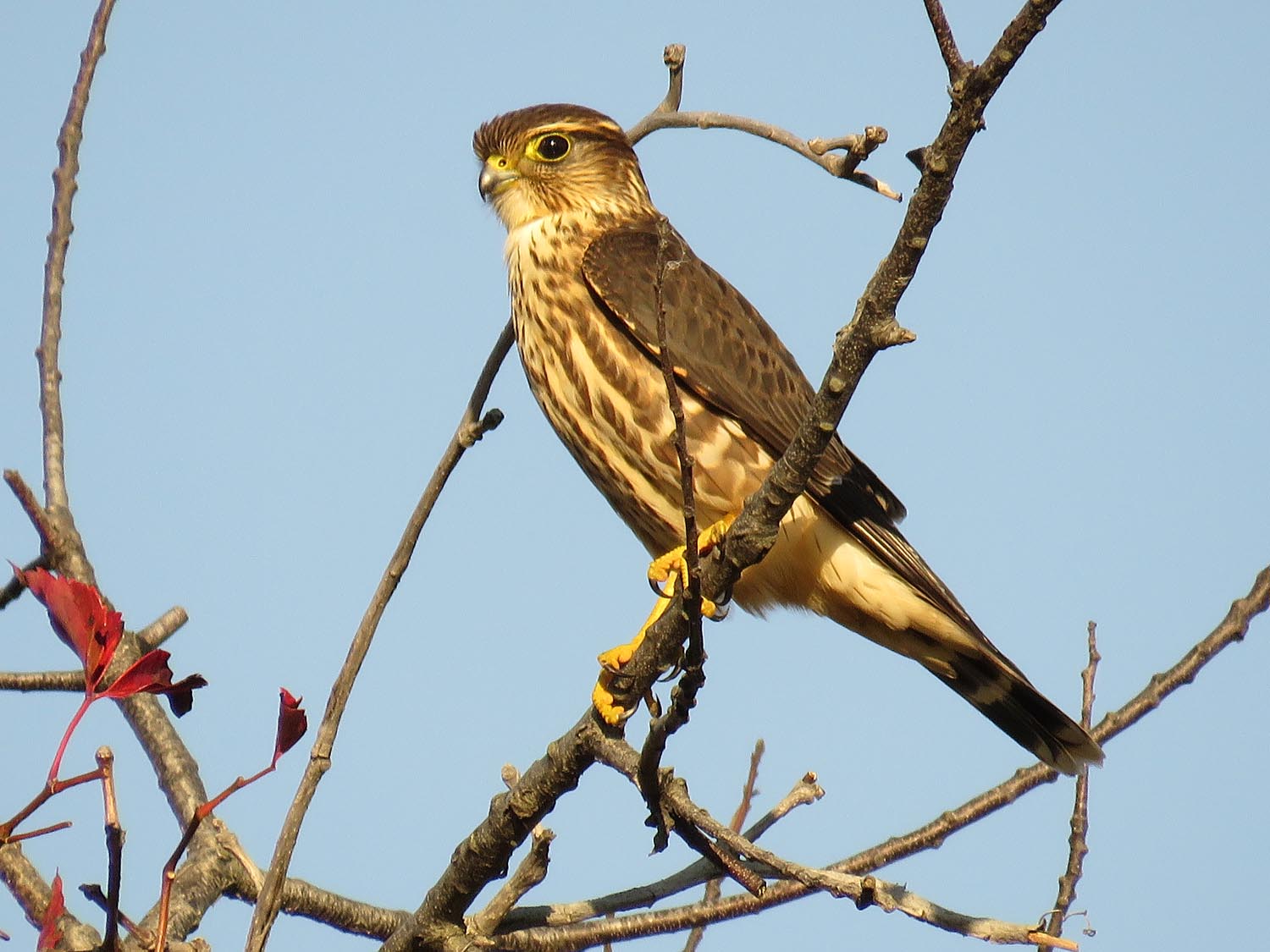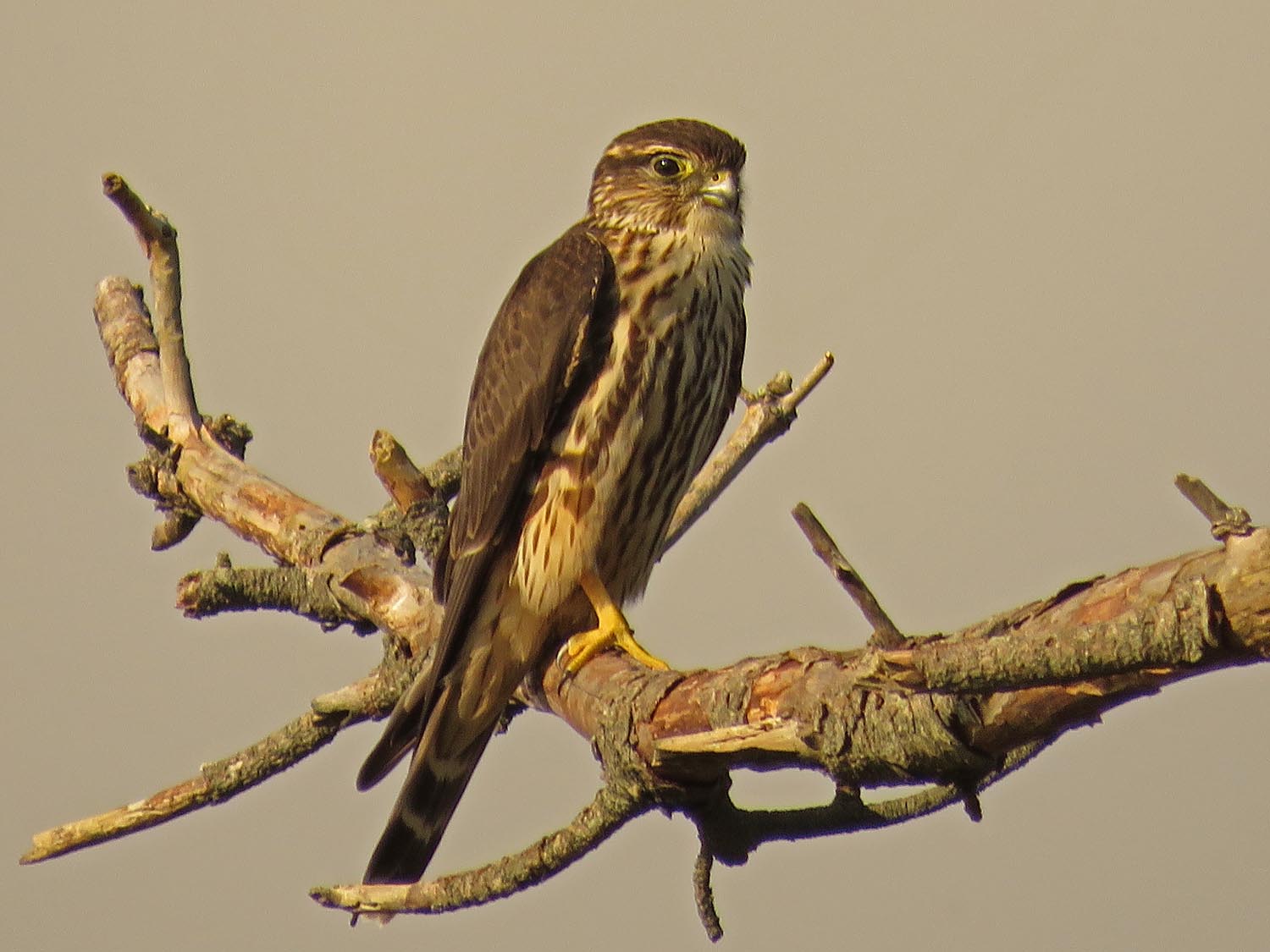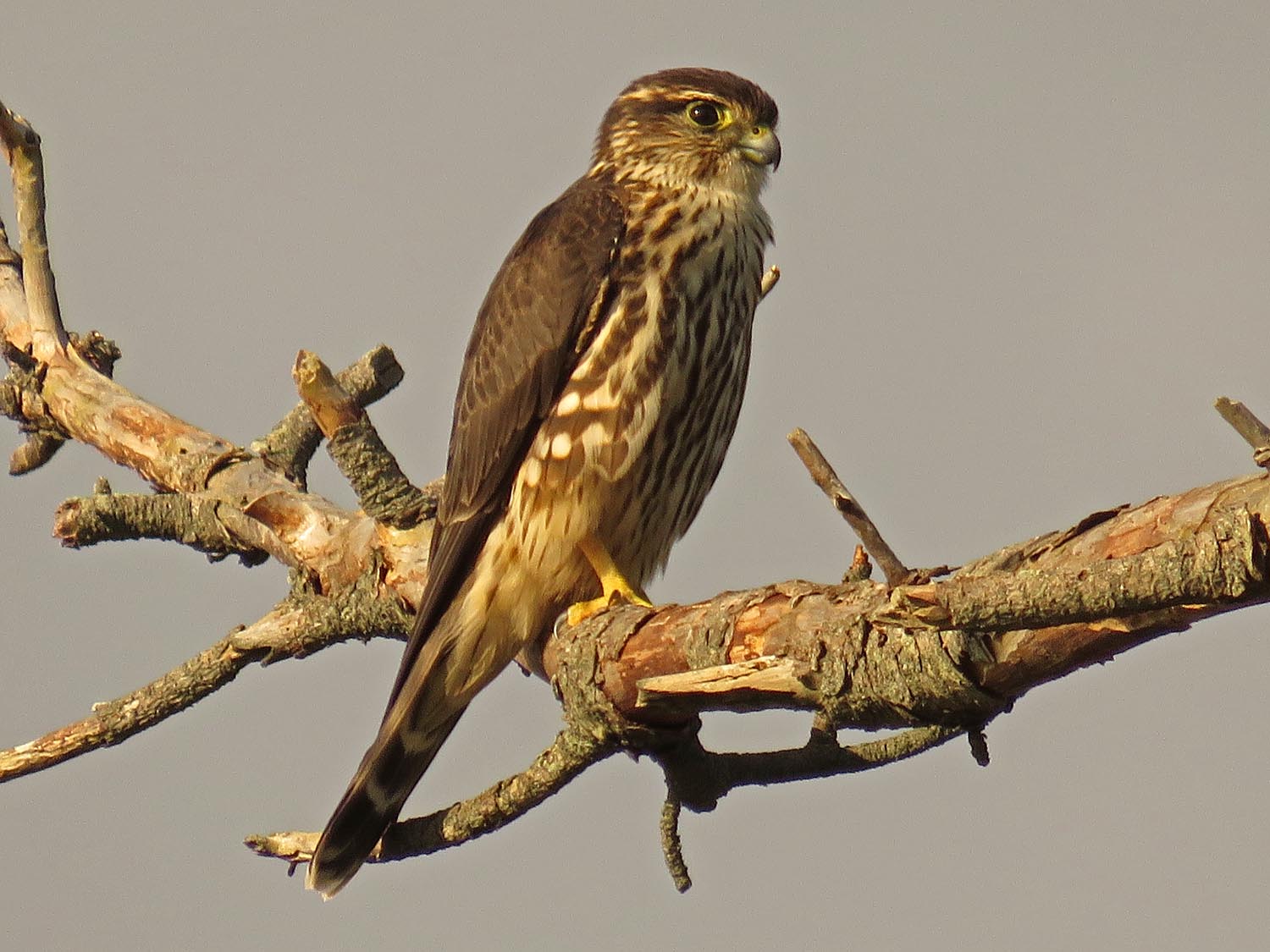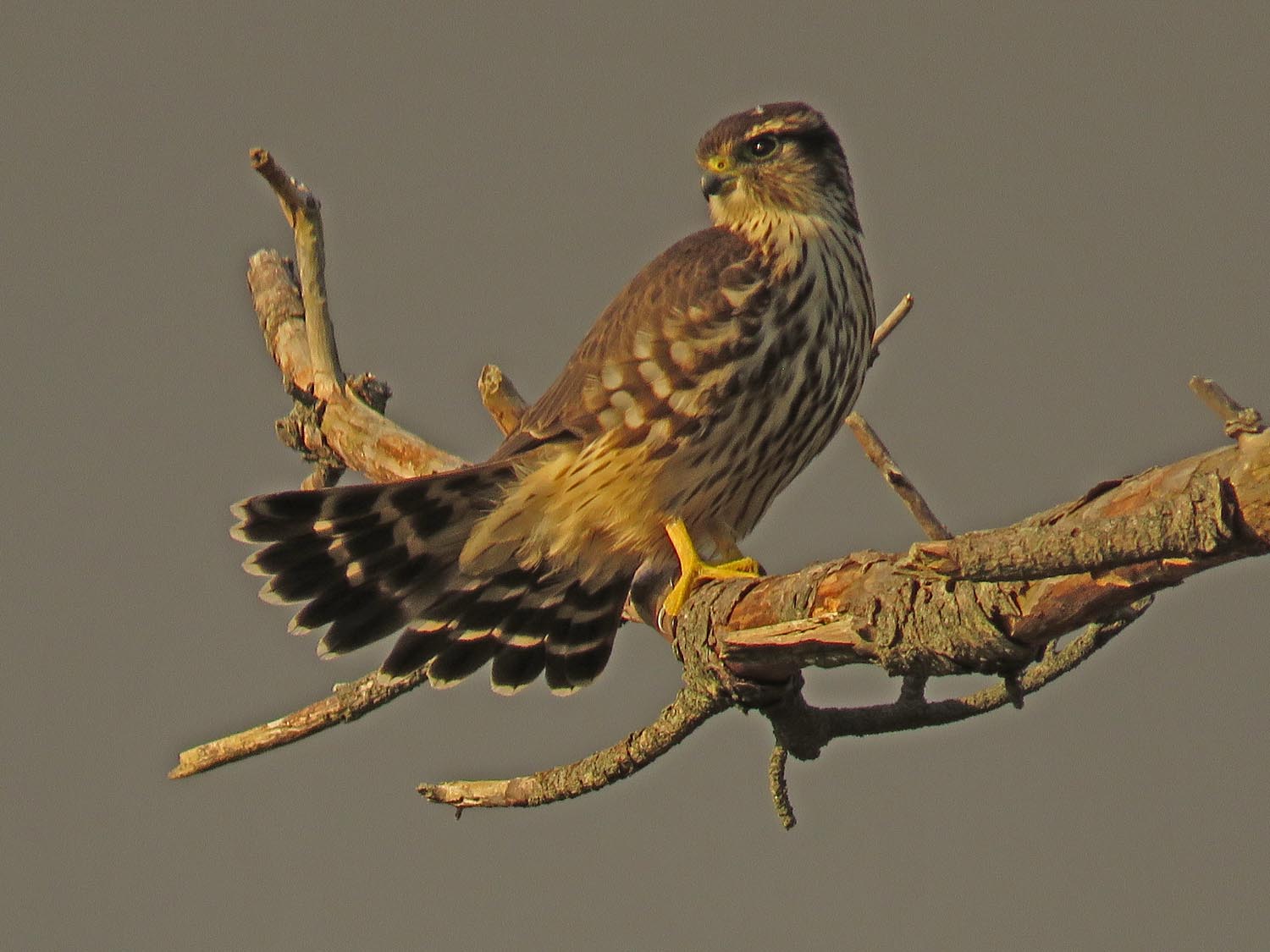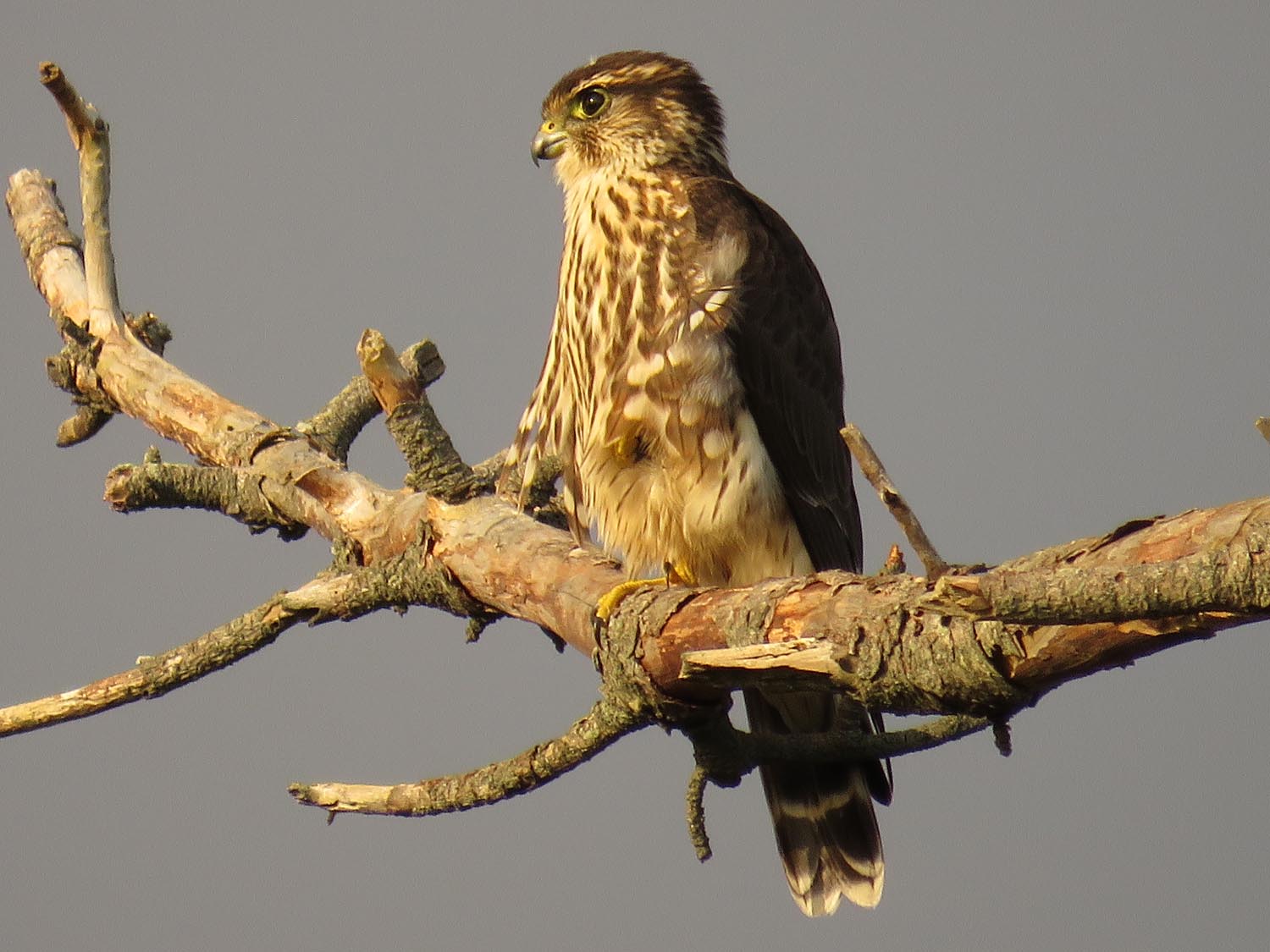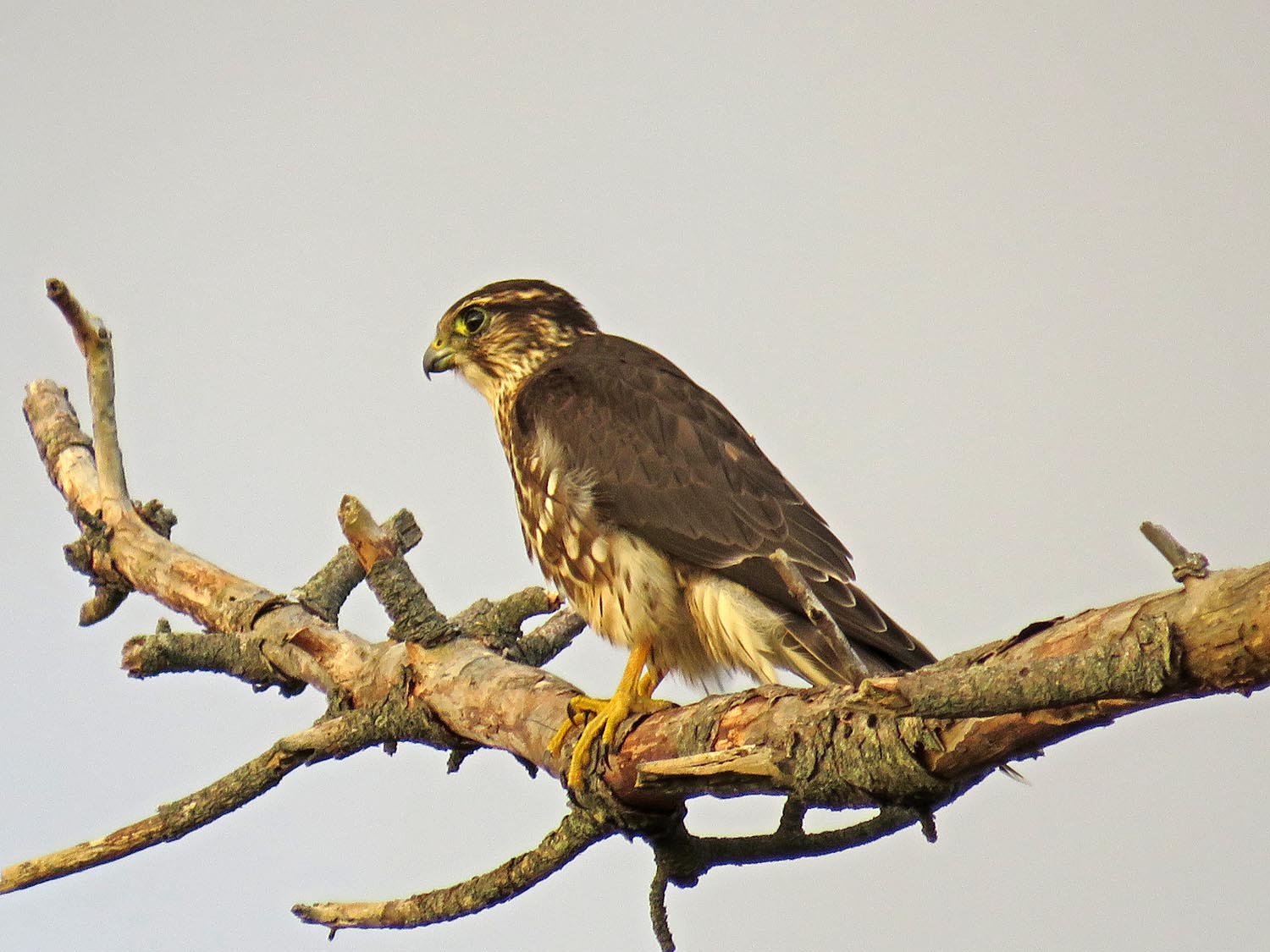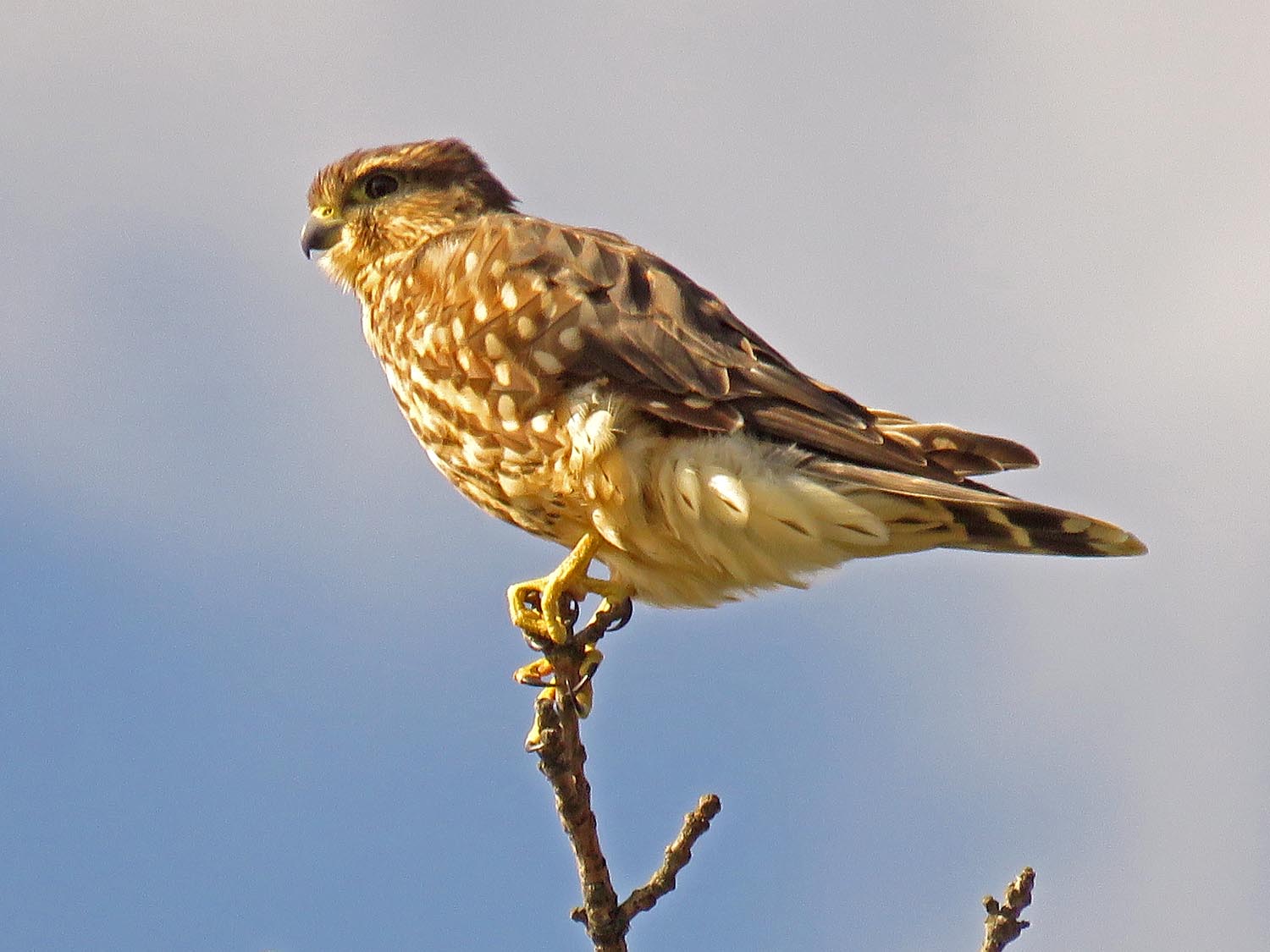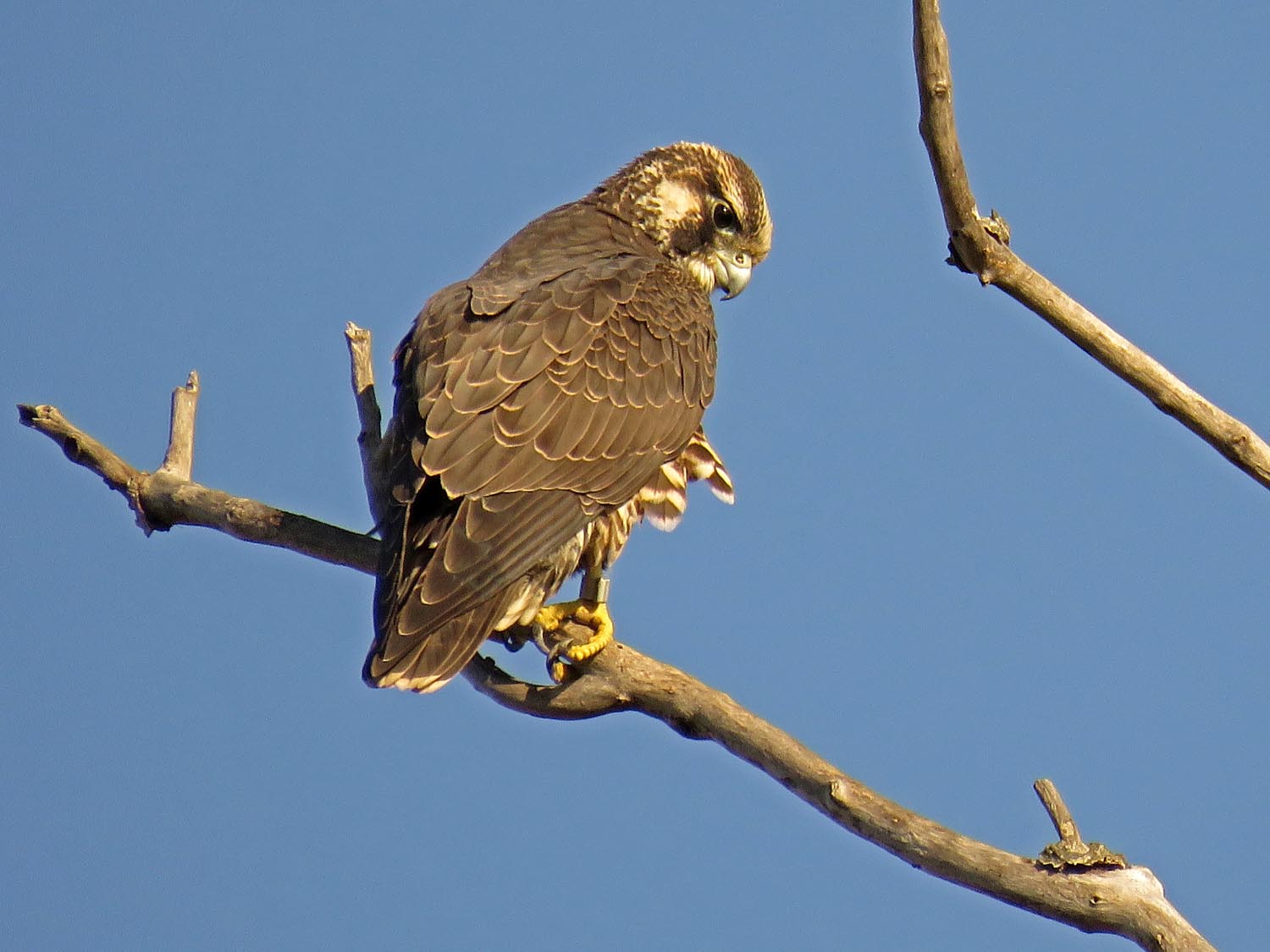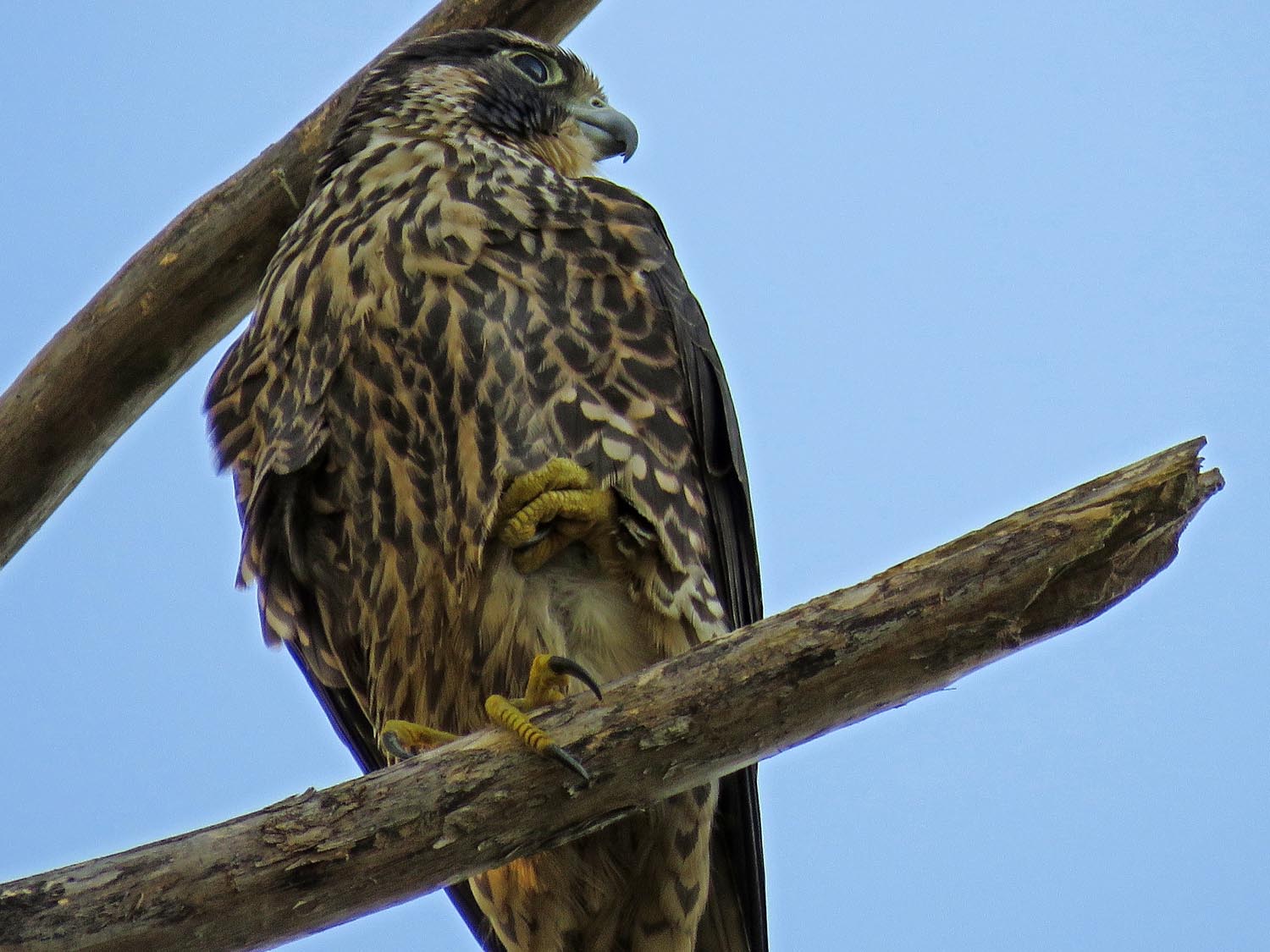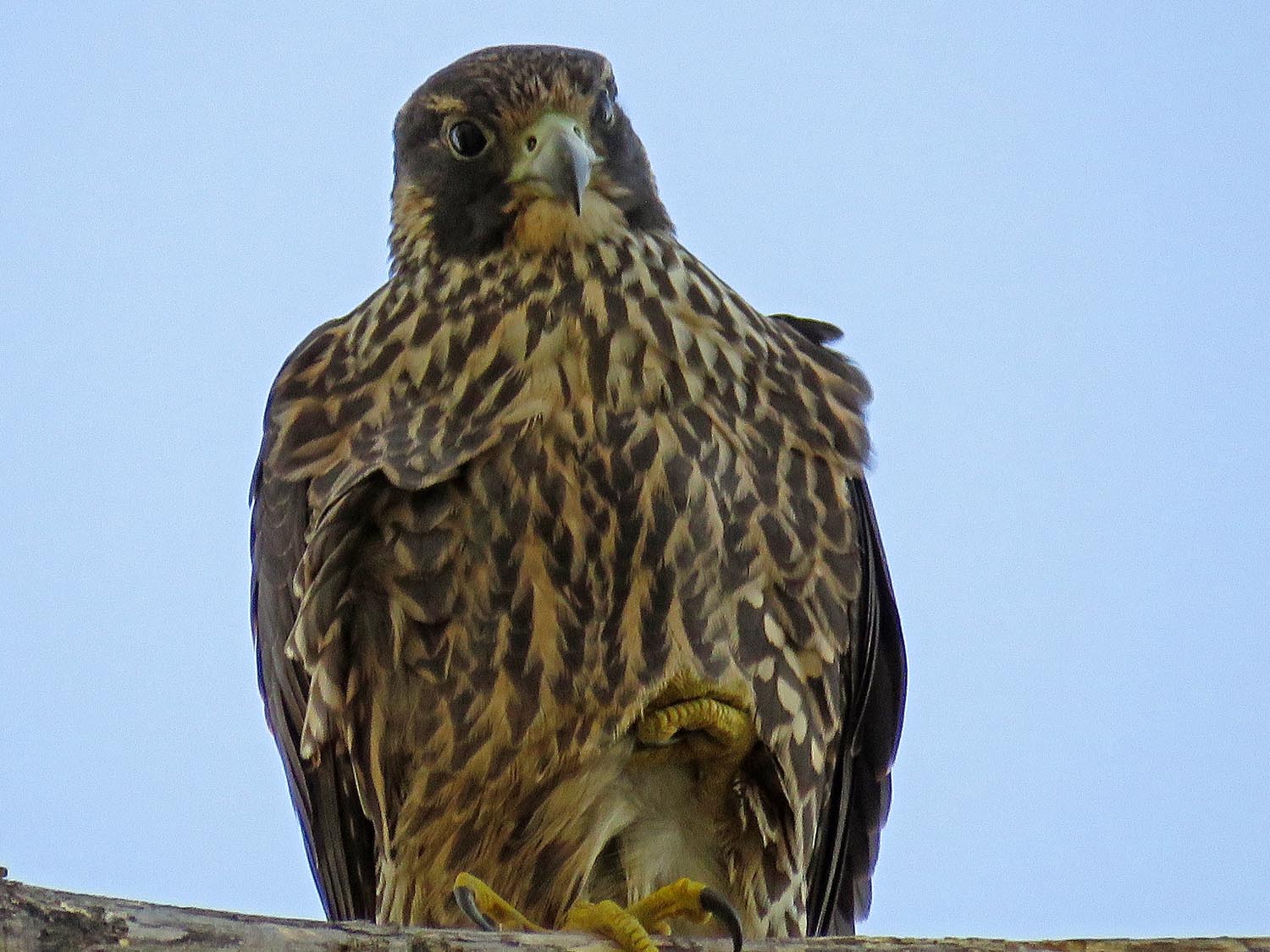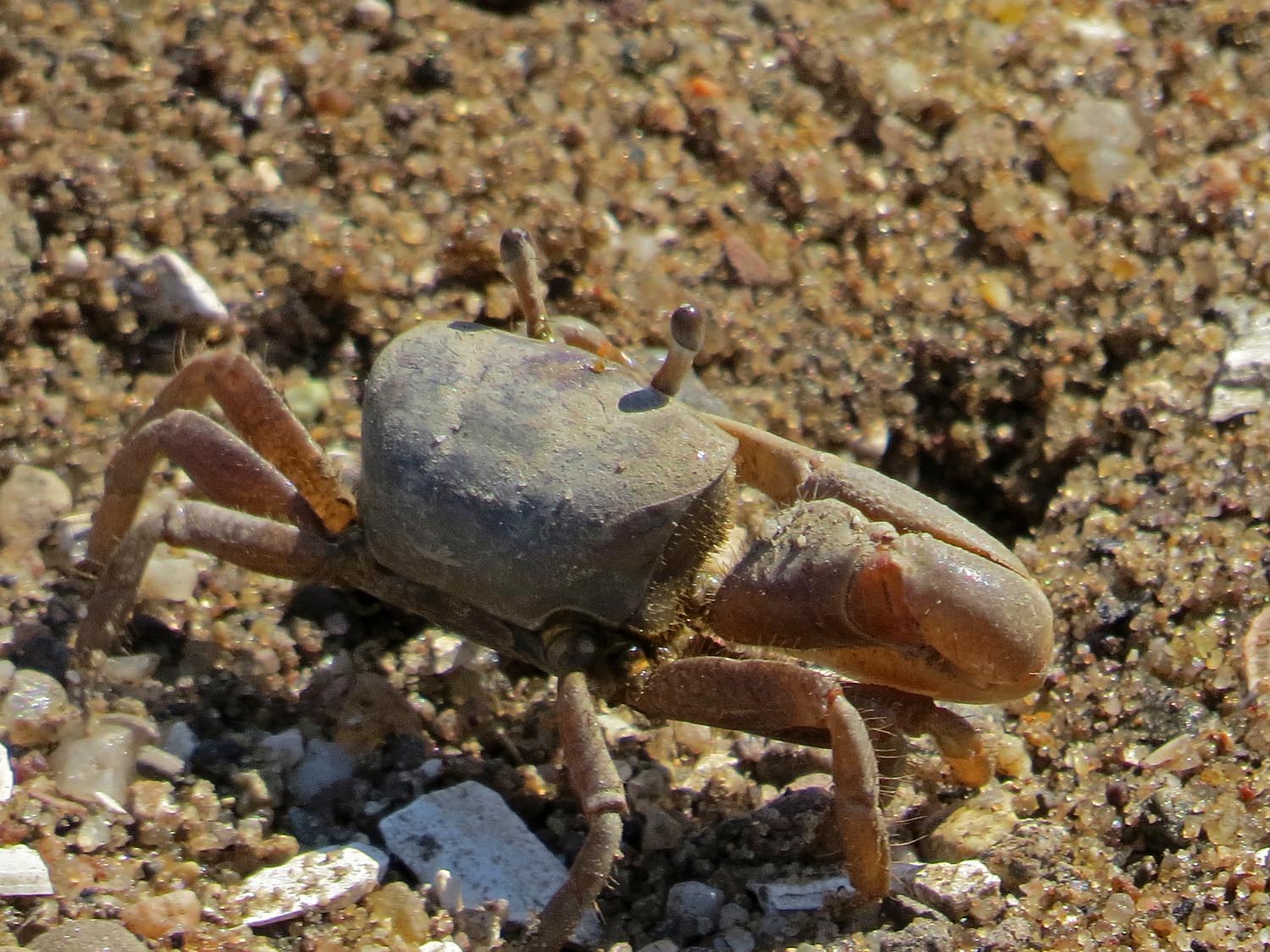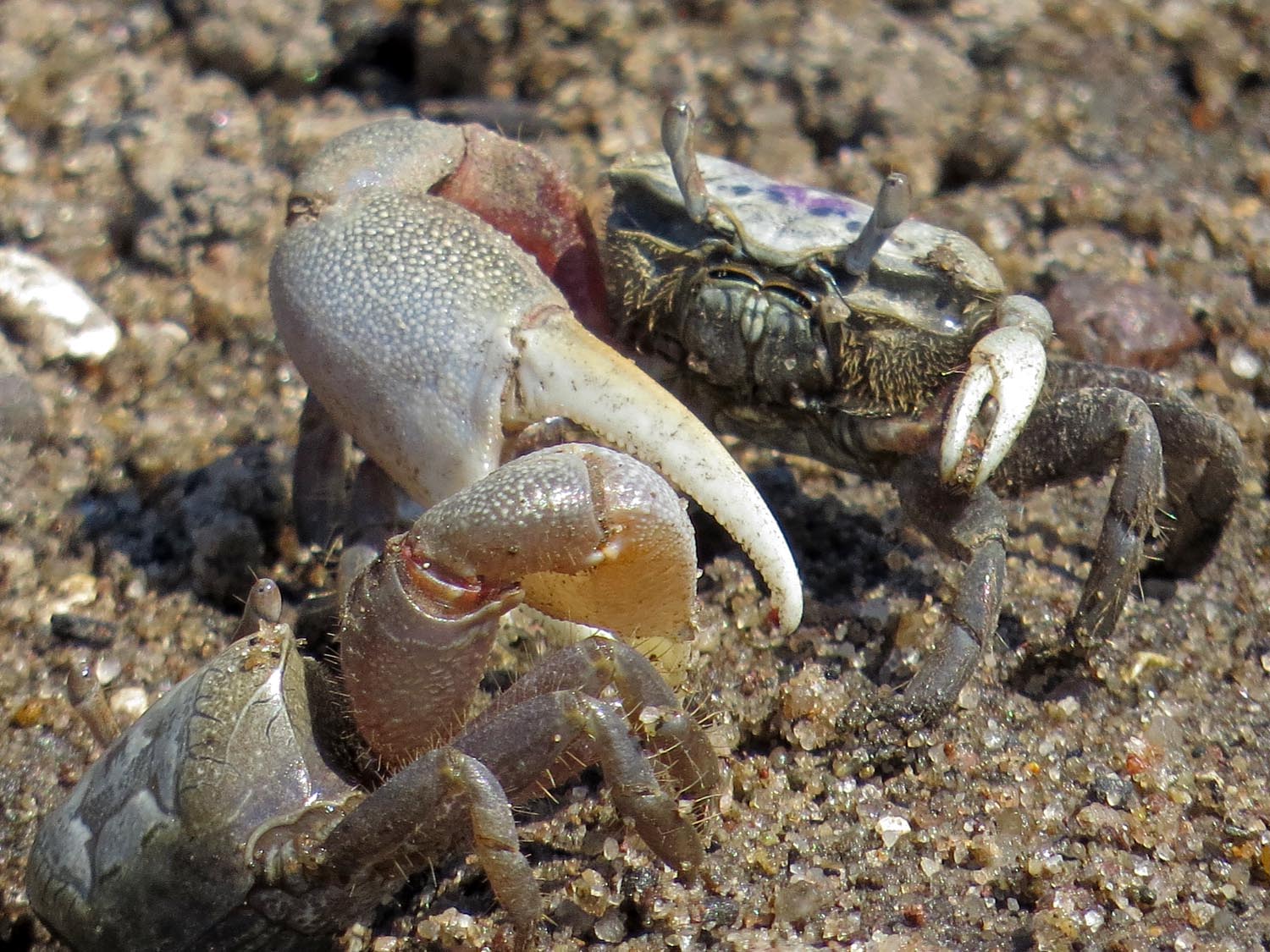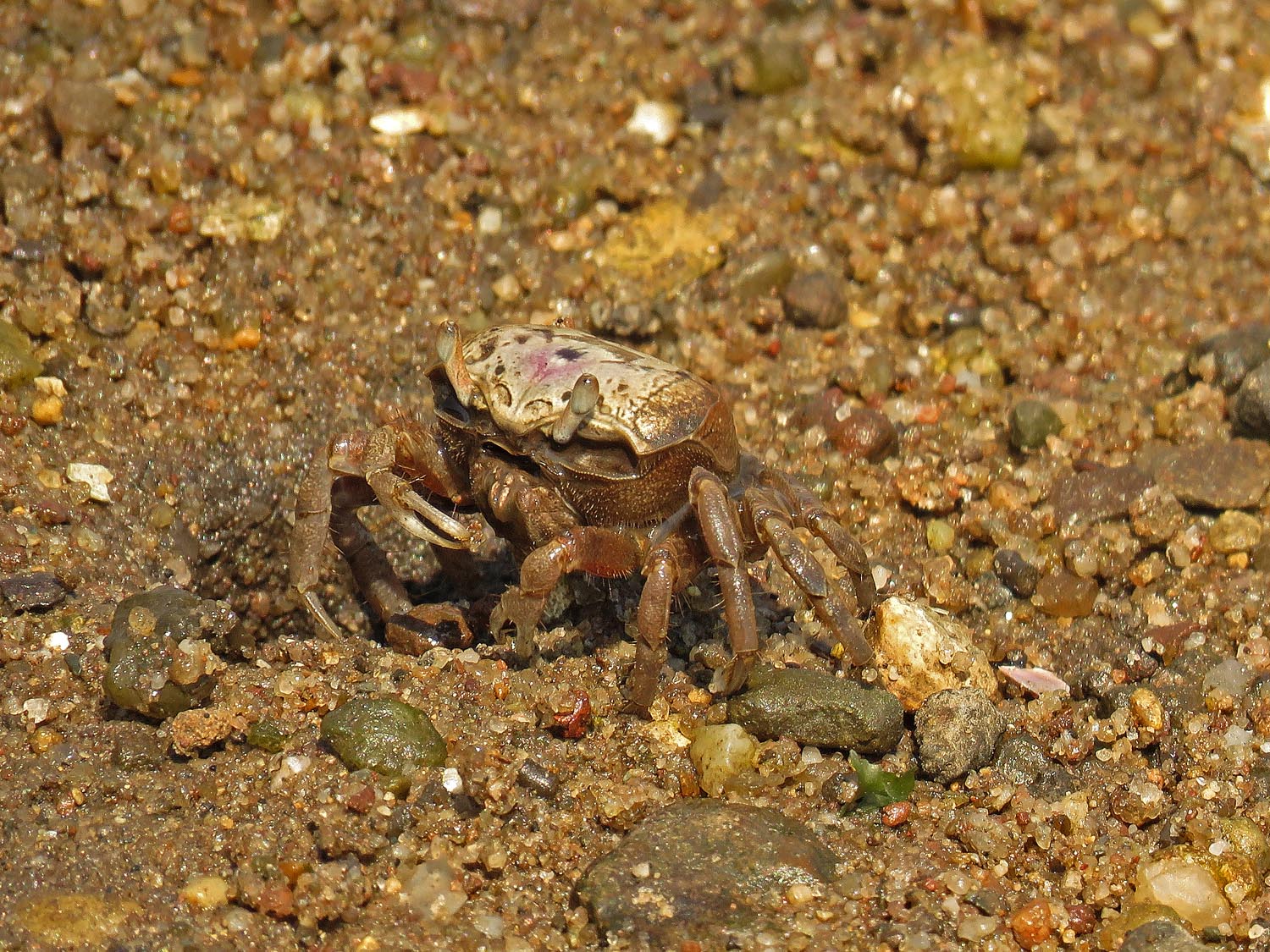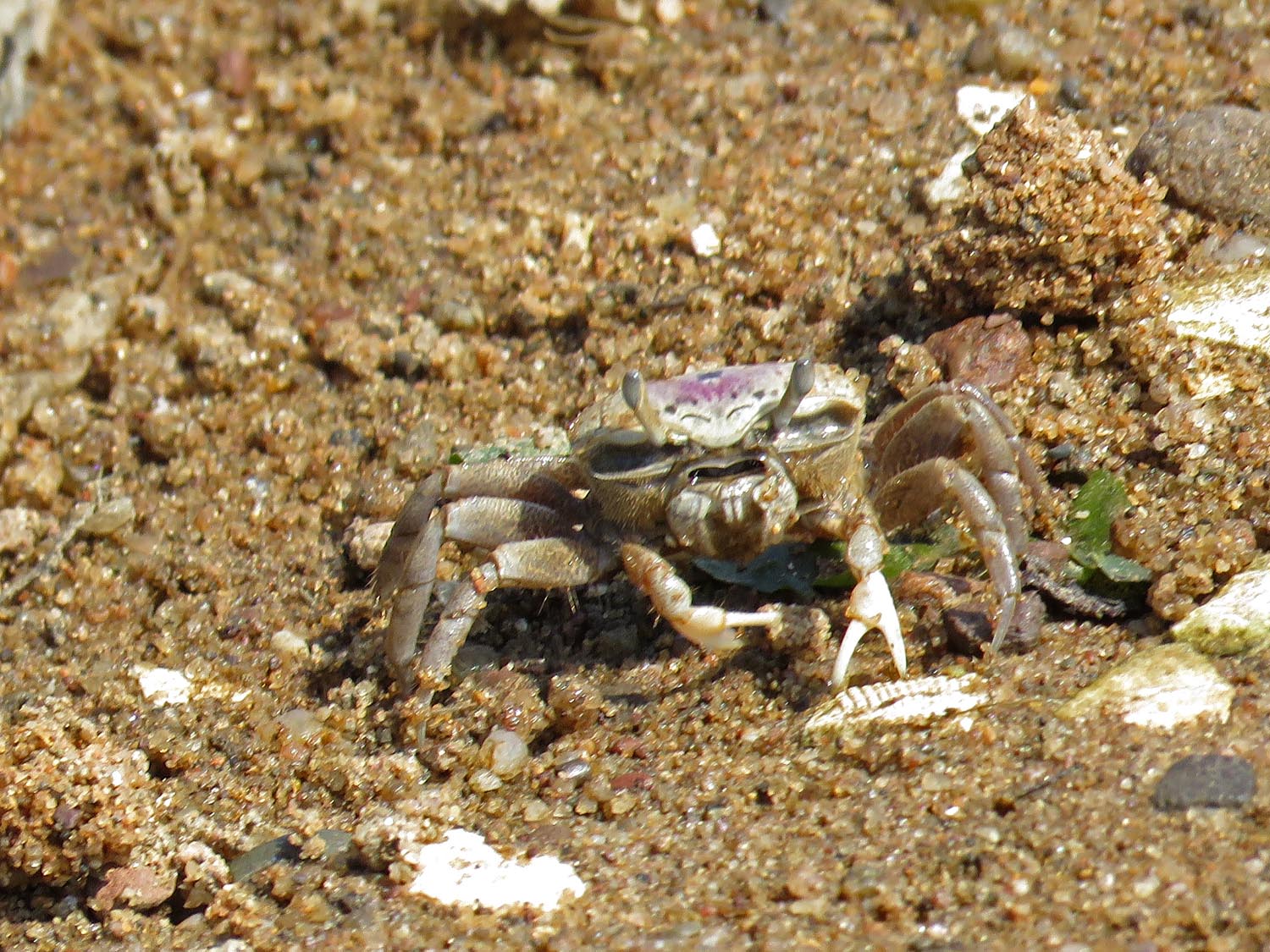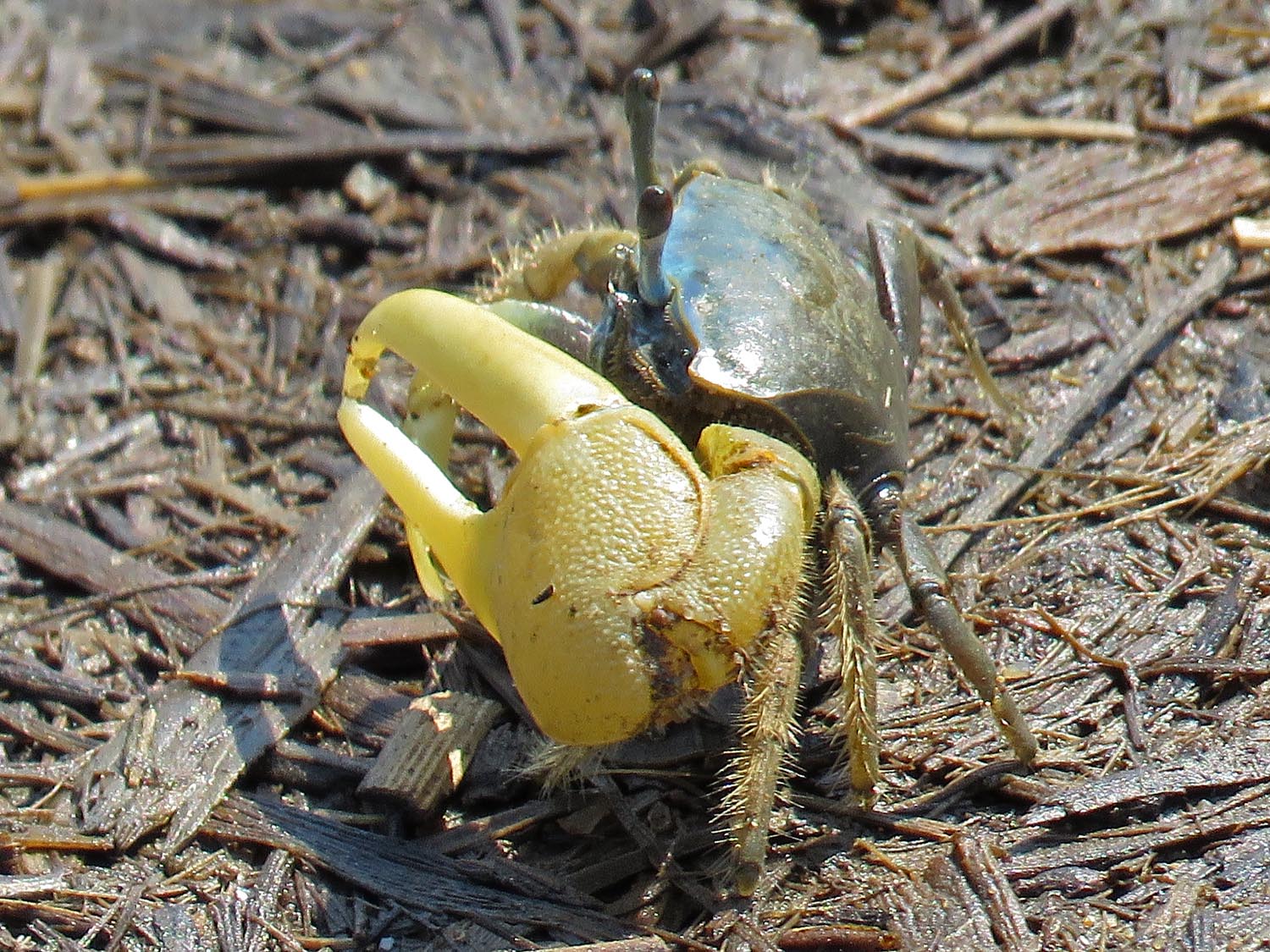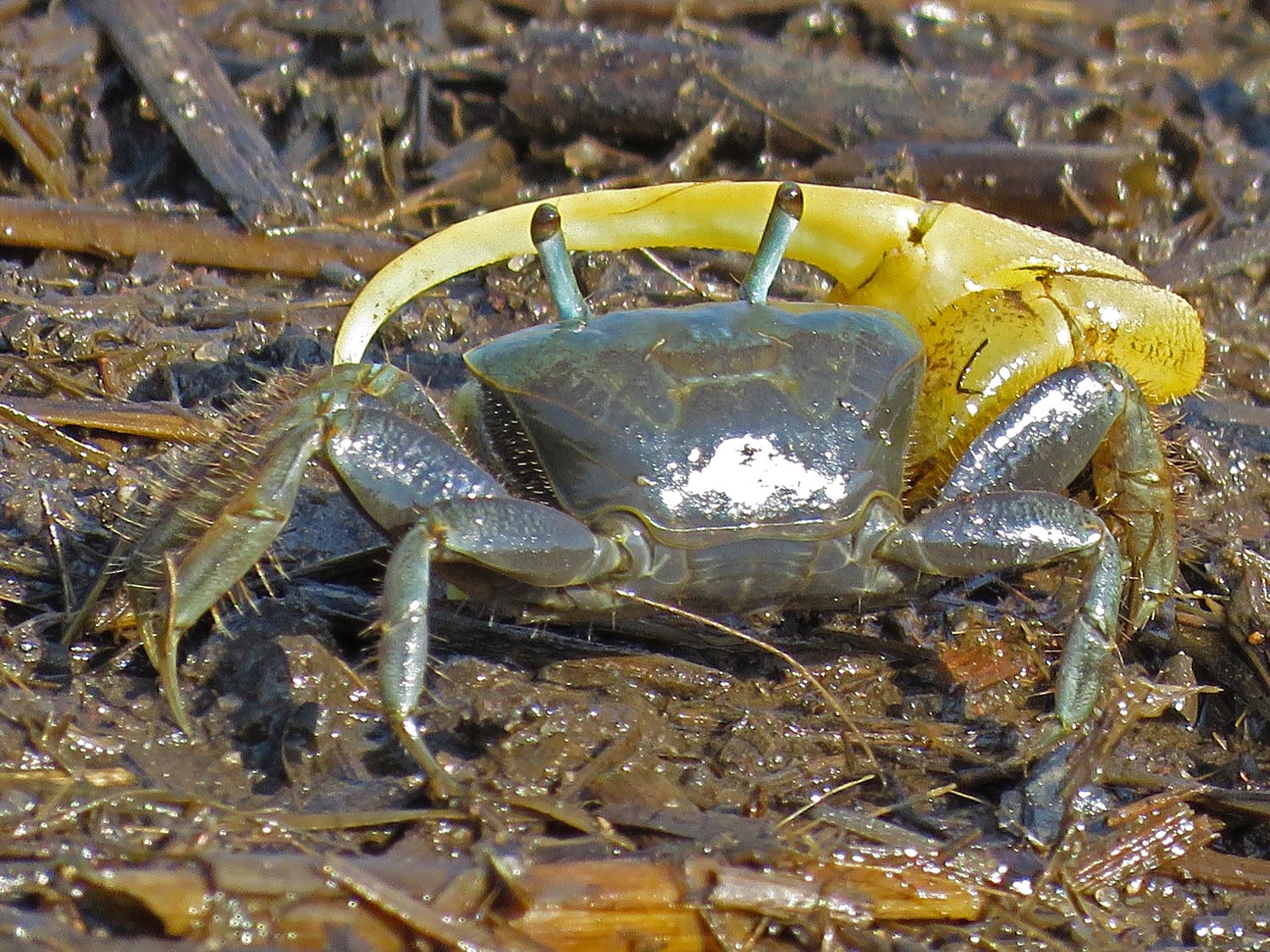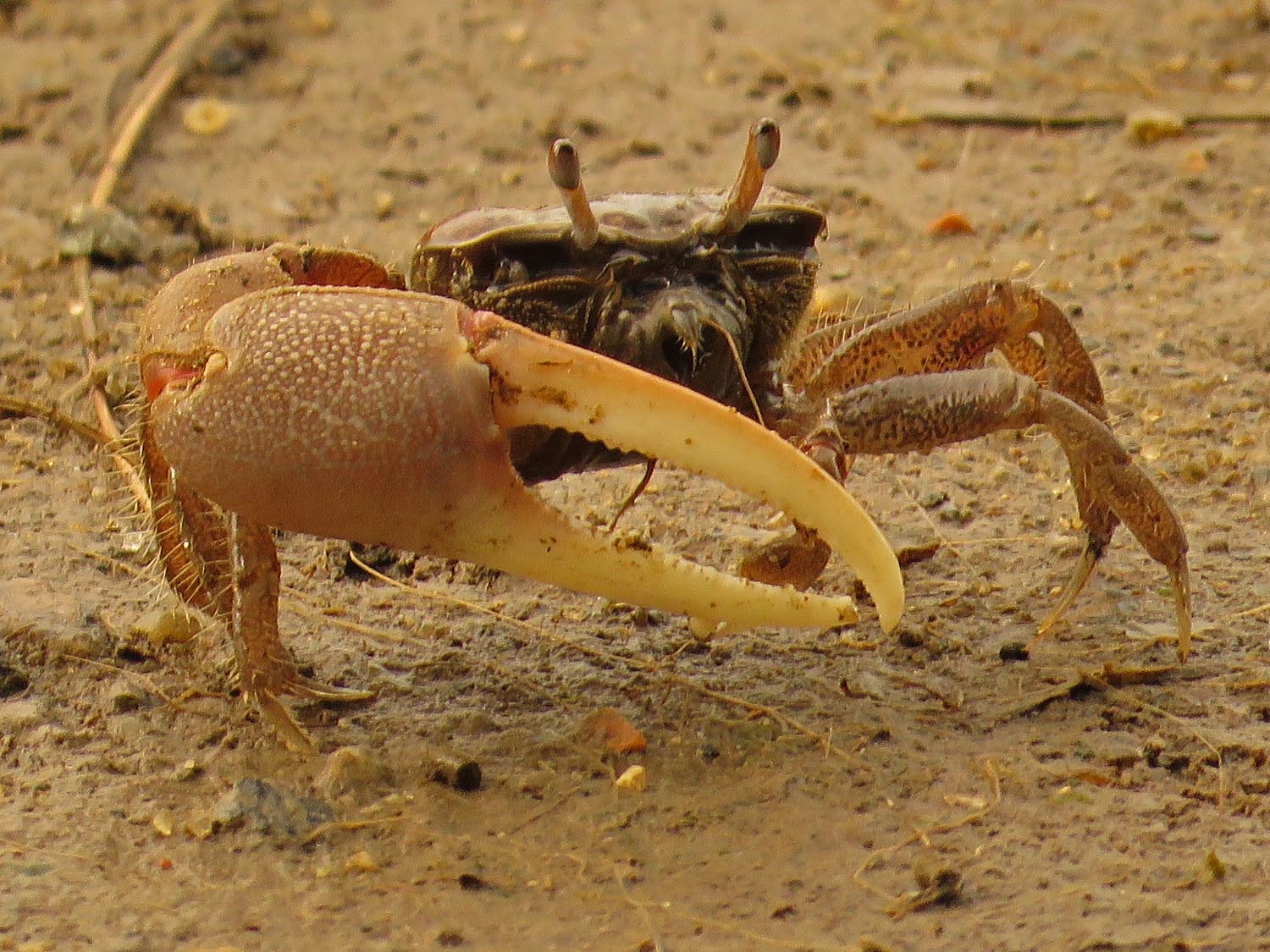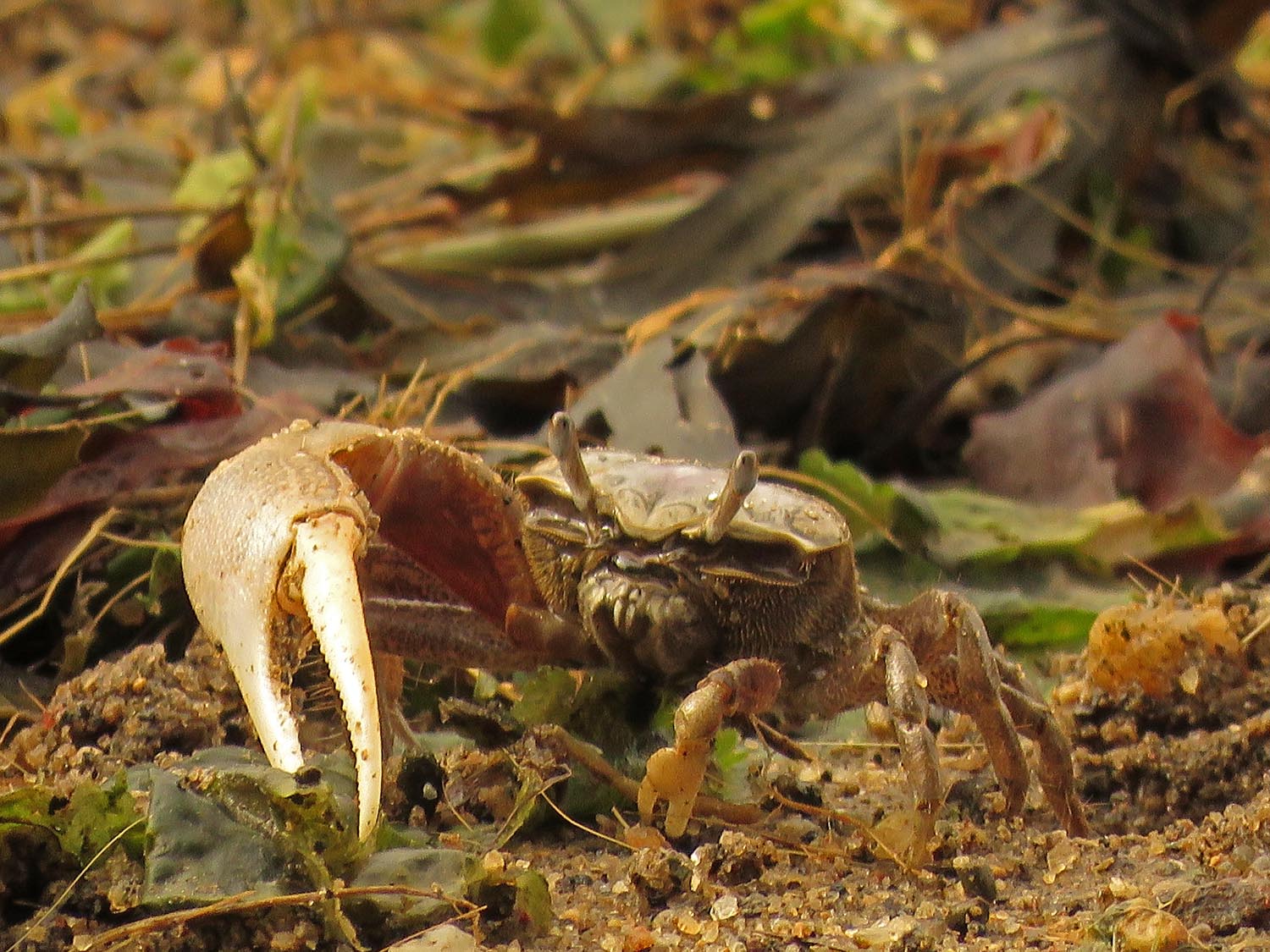I often hear the belted kingfishers (Megaceryle alcyon) before I see them. I hear the rattle, then spot the bird zipping over the water, often smacking down to catch a fish or crayfish. These colorful, big-headed birds hang out along rivers and shorelines — including the water areas of Central Park, Mount Loretto Unique Area and Jamaica Bay Wildlife Refuge, where I filmed them for the Filming the Feathers video. The females are the colorful ones in this bird species, having a blue "belt" and a rusty colored "belt" (the male has a blue belt).
Belted kingfisher, Jamaica Bay Wildlife Refuge, September 30, 2017
The video is accompanied by harpsichord music, and features kingfishers filmed at Central Park, Jamaica Bay Wildlife Refuge and Mount Loretto Unique Area.
Usually the belted kingfishers are pretty far away, so my photos are generally not that crisp and clear. I did have a nice opportunity on September 30 to see a kingfisher up close at Jamaica Bay, though, so you get more of these photos. The first three photos were taken in Central Park, the fourth at Mount Loretto and the last, close-up shots at Jamaica Bay.


